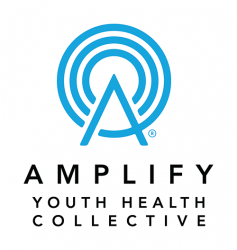Puberty - a time of great, and sometimes daunting, change for both young people and the adults in their lives. This interactive, full-day training will provide educators, school nurses, youth-serving professionals, and other caring adults with skills and strategies for teaching pubescent youth about their changing bodies, emotional growth, and navigating the path to adulthood in a way that is inclusive of students of all genders and sexual identities. Through a social-emotional learning lens, participants will have an opportunity to engage in lessons and activities that will build their own skills to teach anatomy, menstruation, hygiene, cultivating empathy, and more. Registration link here.
Training Hub
The Sex Education Collaborative Training Hub lists trainings for sex educators, facilitators, and other professionals on best practices for sharing important information with clients and the public. From teaching anatomy inclusively to effectively addressing bias in the classroom to addressing racial justice and equity in sex education, the Training Hub includes trainings, technical assistance, and policy support from state, regional, and national leaders in the field of sex education.
Please note: The Training Hub includes both in-person and online professional trainings. If you see a training you are interested in and it isn’t listed as virtual, please reach out directly to any of our members to find out what's possible!
Trainings Offered by State-Based and National Organizations
Displaying results 31 - 35 of 137Periods and Wet Dreams: Teaching Puberty in Elementary School
- Indicator 1 (6-12): Explain fertilization, implantation, conception, and how pregnancy occurs.
- Indicator 1 (K-12): Demonstrate three techniques to create an inclusive and affirming learning environment. (S)
- Indicator 2 (K-12): Demonstrate three strategies for creating culturally responsive classrooms. (S)
- Indicator 4 (K-12): Demonstrate three strategies of a trauma-informed approach to sex education (e.g. giving trigger warnings before content on sexual assault and allowing students the right to pass as appropriate, etc.). (S)
- Indicator 1 (K-12): Demonstrate the ability to build rapport with students. (S)
- Indicator 2 (K-12): Demonstrate three student-centered instructional approaches that support a variety of learning styles. (S)
- Indicator 3 (K-12): Explain the differences between positive vs. shaming approaches to teaching sex education.
- Indicator 4 (6-12): Demonstrate how to use the experiential learning cycle when teaching. (S)
- Indicator 5 (K-12): Describe three effective strategies for practicing skills with students.
- Indicator 6 (K-12): Describe three strategies for actively involving parents, caregivers, and other trusted adults in a sex education program.
- Indicator 7 (K-12): Demonstrate the ability to analyze and tailor lesson plans to match the age, developmental stages, cultural backgrounds, and other identities of students. (S)
- Indicator 1 (K-12): Describe three distinguishing characteristics between healthy and unhealthy relationships, involving family, friends, and/or romantic partners.
- Indicator 2 (K-12): Explain three ways that healthy relationships can positively impact personal well-being.
- Indicator 3 (K-12): Describe three strategies for teaching students communication skills.
- Indicator 5 (K-12): Describe three ways to help students set and respect personal boundaries in relationships.
- Indicator 2 (K-12): Define sexual orientation and sexual identity, including that everyone has both.
- Indicator 3 (6-12): Explain the difference between sexual orientation, sexual behavior, and sexual identity.
- Indicator 4 (K-12): Demonstrate the use of inclusive and affirming language. (S)
- Indicator 7 (K-12): Identify three credible, medically accurate, youth-friendly resources that can provide information or support related to sexual orientation.
- Indicator 1 (K-12): Describe how puberty prepares the human body for the potential to reproduce.
- Indicator 2 (K-12): List three physical, three social, and three emotional changes that occur during puberty.
- Indicator 3 (K-12): Identify three practices that students can adopt for maintaining healthy habits beginning during puberty.
- Indicator 1 (K-12): Explain three reasons why it is important to respond to every question students ask when teaching sex education.
- Indicator 2 (K-12): Demonstrate the ability to effectively respond to three different types of challenging questions. (S)
- Indicator 1 (K-12): Describe three health (e.g. physical, social and/or emotional) and/or academic benefits of sex education for young people
- Indicator 2 (K-12): Describe state and/or district laws, policies, and standards that relate to sex education where one teaches.
- Indicator 1 (K-5): Explain the benefits of teaching young children the medically accurate terms for genitals.
- Indicator 2 (K-12): Demonstrate the ability to use medically accurate terms for sexual and reproductive anatomy, including all external genitals. (S)
- Indicator 3 (K-12): Explain the function of the individual sexual and reproductive body parts and how they typically work.
- Indicator 1 (K-12): Explain how availability of supportive school staff, presence of Gay-Straight Alliances (GSAs), gender-inclusive curricular resources, and the presence of comprehensive enumerated anti-harassment school policies are related to improved school climate for students of all gender identities.
- Indicator 2 (K-12): Demonstrate the use of inclusive and affirming language. (S)
- Indicator 3 (K-12): Define gender identity and sex assigned at birth.
- Indicator 4 (K-12): Explain how gender identity and gender expression are distinct from each other and from sexual orientation.
- Indicator 7 (K-12): Identify three credible, medically accurate, youth-friendly resources that can provide information or support related to transgender and gender expansive people.
- Indicator 8 (K-12): Explain why it is essential to include positive portrayals of transgender and gender expansive people in lessons.
- Indicator 9 (K-12): Demonstrate three strategies that can be used to make lessons affirming for transgender and gender expansive people. (S)
- Indicator 3 (K-12): Explain the importance of educators refraining from sharing their personal values when implementing sex education.
- Indicator 4 (K-12): Demonstrate the ability to respond effectively to students’ values-based comments and questions. (S)
Accessible Sex Ed Training for Facilitators
This workshop is designed for sex ed and family life educators who want to make their programs more accessible to people with a variety of disabilities, particularly autistic people and people with intellectual and developmental disabilities (IDD).
Adding these skills to your toolbox makes affirming, inclusive education more accessible for all participants..
“Accessible Sex Ed” also covers how to talk with caregivers about the importance of complete, fact-based education for all people, especially neurodiverse folx.
Funding to develop this training was provided in part by the Tennessee Disability Coalition.
- Indicator 1 (K-12): Explain three reasons why it is important to respond to every question students ask when teaching sex education.
- Indicator 2 (K-12): Demonstrate the ability to effectively respond to three different types of challenging questions. (S)
Sexual Health Education Essentials
Sexual Health Education Essentials is a foundational training meant to prepare sexual health educators, school personnel, and other youth work professionals to support young people. Training content is data-driven and aligned with best-practices in the field of adolescent sexual health promotion. Topics covered during pre-work and live training include holistic sexuality, adolescent growth & development, reproductive health, responding to sensitive questions, values in sexual health education, consent, contraception, and more. Sexual Health Education Essentials is recommended for anyone new to the field of sexual health education or for trusted adults working with young people in any capacity who wish to gain knowledge and strengthen their skills.
- Indicator 1 (6-12): Explain fertilization, implantation, conception, and how pregnancy occurs.
- Indicator 3 (6-12): Describe the differences in mechanisms of action and access between emergency contraception and the abortion pill.
- Indicator 4 (6-12): Explain methods of contraception, including the latest medical advances that are popular among young people.
- Indicator 6 (6-12): Identify three federal and/or state laws that impact young peoples’ access to effective reproductive and sexual health care (e.g. age of consent for services, confidential access to health care services, and access to condoms)
- Indicator 1 (K-12): Demonstrate three techniques to create an inclusive and affirming learning environment. (S)
- Indicator 1 (K-12): Describe the importance of teachers’ maintaining professional boundaries when teaching sex education.
- Indicator 2 (K-12): List three factors to consider regarding personal disclosure when teaching sex education
- Indicator 3 (K-12): Demonstrate how to reduce the impact of educators’ passive and/or active personal disclosure on the educational environment. (S)
- Indicator 4 (K-12): Explain the roles and responsibilities of a mandated reporter.
- Indicator 5 (K-12): Explain the state- and district-mandated reporting requirements and procedures.
- Indicator 1 (K-12): Demonstrate the ability to build rapport with students. (S)
- Indicator 1 (6-12): Describe HIV and three common STDs/STIs, and how each can and cannot be transmitted.
- Indicator 2 (6-12): Explain that many STD/STIs do not cause symptoms and the only way to know if you have one is to be tested.
- Indicator 2 (K-12): Define sexual orientation and sexual identity, including that everyone has both.
- Indicator 3 (6-12): Explain the difference between sexual orientation, sexual behavior, and sexual identity.
- Indicator 4 (K-12): Demonstrate the use of inclusive and affirming language. (S)
- Indicator 1 (K-12): Describe how puberty prepares the human body for the potential to reproduce.
- Indicator 1 (K-12): Explain three reasons why it is important to respond to every question students ask when teaching sex education.
- Indicator 2 (K-12): Demonstrate the ability to use medically accurate terms for sexual and reproductive anatomy, including all external genitals. (S)
- Indicator 3 (K-12): Explain the function of the individual sexual and reproductive body parts and how they typically work.
- Indicator 2 (K-12): Demonstrate the use of inclusive and affirming language. (S)
- Indicator 3 (K-12): Define gender identity and sex assigned at birth.
- Indicator 4 (K-12): Explain how gender identity and gender expression are distinct from each other and from sexual orientation.
- Indicator 1 (K-12): Explain the differences between personal and universal values relating to sexuality.
- Indicator 2 (K-12): Describe how verbal and nonverbal expression of personal values, and comfort with topics related to sex education, could impact one’s teaching
- Indicator 3 (K-12): Explain the importance of educators refraining from sharing their personal values when implementing sex education.
- Indicator 4 (K-12): Demonstrate the ability to respond effectively to students’ values-based comments and questions. (S)
Creating Safer Spaces in the Classroom
Each of us has experienced some type of trauma, whether it is collective trauma- like a natural disaster- or a personal trauma- like sexual abuse. In the classroom, trauma can show up in ways that look like behavior issues and actions that require discipline. Participants will learn small changes that can make a big difference in the classroom for students who have experienced trauma.
- Indicator 1 (K-12): Demonstrate three techniques to create an inclusive and affirming learning environment. (S)
- Indicator 3 (K-12): Describe three elements of a trauma-informed approach to sex education.
- Indicator 4 (K-12): Demonstrate three strategies of a trauma-informed approach to sex education (e.g. giving trigger warnings before content on sexual assault and allowing students the right to pass as appropriate, etc.). (S)
Everyone's an Asset Builder
Research with millions of young people shows the power of people from all walks of life committing to do what they can to support all young people’s success. By participating in this highly interactive workshop, parents, educators, mentors, neighbors, youth workers, and community leaders will:
• understand the strengths and supports that are essential for young people’s success in school, work, and life, based on Search Institute’s research on Developmental Assets
• identify qualities of individuals who play powerful roles in young people’s lives
• discover opportunities in their everyday lives for making a positive difference
• make personal commitments to take personal action to support youth success
This training is appropriate for all trusted adults within the community.
- Indicator 1 (K-12): Demonstrate the ability to build rapport with students. (S)
Additional Trainings offered by out-of-state organizations
- ‹ previous
- 32 of 49
- next ›
Minors Rights in Georgia
Participants will be able to describe the rights of minors in Georgia as related to confidentiality, informed consent, contraceptive care and counseling, abortion, STI testing, HIV/AIDS testing, substance abuse, and emergency care. We will provide youth-friendly resources for accessing reproductive health needs.
- Indicator 6 (6-12): Identify three federal and/or state laws that impact young peoples’ access to effective reproductive and sexual health care (e.g. age of consent for services, confidential access to health care services, and access to condoms)



